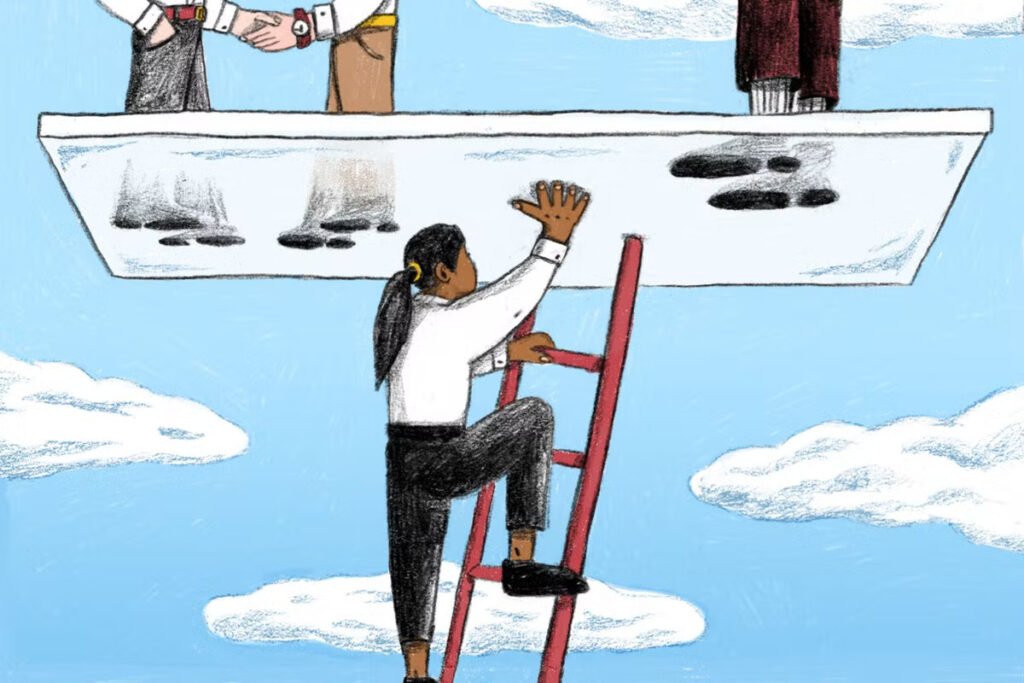As a mixed bag of assumptions, the model minority myth involves various stereotypes associated with Asian Americans, implying they’re successful and intelligent no matter what while also labeling them weak, submissive, and docile. These stereotypes impact Asian Americans extensively, even affecting the growth of their professional careers.
While Asian Americans are well-represented in lower-level positions at companies such as Google, Hewlett-Packard, Intel, LinkedIn, and Yahoo, they are certainly not as well-represented at management and executive levels. According to the report “Hidden in Plain Sight: Asian American Leaders in Silicon Valley,” which analyzed 2013 data filed with the U.S. Equal Employment Opportunity Commission related to the previously mentioned tech firms, white men and women are 154% more likely than Asians to receive promotions to executive positions. And based on the Pew Research Center’s consideration of 2012 data, Asians represent only 1.5% of corporate officer positions in the Fortune 500. This phenomenon of Asian Americans receiving consistent underrepresentation in leadership positions has amounted to the bamboo ceiling, an apt label for how the model minority myth prevents Asian Americans from attaining managerial and executive roles in workplaces.
Despite Asian Americans having the highest chances of being hired for high-tech jobs (which could be explained by the H-1B visa), they are also the least likely group in the United States to be promoted to management due to cultural stigma and biased attitudes. The model minority myth continues to paint Asian Americans as good workers but incapable leaders, causing Asian Americans to be subject to words like, “Everyone knows Asians aren’t leaders. They’re good at execution but when it comes to leading, they don’t have the skills.” These were the words Steven Pae, vice president, Global Head of Marketing and Enterprise Digital Technology, Global Technology for Prudential, faced from a manager of another company.
This problem is not just confined to the tech world, affecting multiple industries across the United States. As per Buck Gee, a former Silicon Valley executive and member of the Committee of 100, and Denise Peck, a former executive at Cisco and Sun Microsystems and currently an Executive Advisor at Ascend, and a report coauthored by Goodwin Liu, associate justice of the California Supreme Court, “Asian Americans are well-represented in law — they’re more than 10% of the graduates of the top 30 law schools — yet ‘have the highest attrition rates and lowest ratio of partners to associates among all [racial] groups.'” Asian American women are hurt the most by this racial gap which persists in multiple industries, as they face the “double glass ceiling,” combining the impacts of the gender pay gap and having one of the smallest shares of executive-level representation compared to their representation in lower-level jobs.
And when trying to find the source of these problems, one can point to the lack of Asian-related programs geared toward management diversity. With Asian Americans’ high representation rates in lower-level positions, companies often neglect them while providing promotions to leadership positions. Thus, as Buck Gee and Denise Peck mentioned in their article for the Harvard Business Review, “it is critical to institutionalize Asian American leadership as one of the goals and sustained priorities of the company’s leadership development process, not just as a one-time special diversity project.”
For more on combating the bamboo ceiling phenomenon in workplaces and information regarding how Asian Americans are usually promoted only in times of crisis, check out our Instagram account @remodelminority22! Thank you for reading this article, and stay tuned for further articles regarding the model minority myth <3
Works Cited
Gee, Buck, and Denise Peck. “Asian Americans Are the Least Likely Group in the U.S. to Be Promoted to Management.” Harvard Business Review, 31 May 2018, https://hbr.org/2018/05/asian-americans-are-the-least-likely-group-in-the-u-s-to-be-promoted-to-management.
Gee, Buck, et al. Ascend, 2015, Hidden in Plain Sight: Asian American Leaders in Silicon Valley, https://static1.squarespace.com/static/5e8bce29f730fc7358d4bc35/t/5fdd263839dfa831a4ca3da6/1608328760774/Hidden-In-Plain-Sight.pdf.
Johnson, Stefanie K, and Thomas Sy. “Why Aren’t There More Asian Americans in Leadership Positions?” Harvard Business Review, 19 Dec. 2016, https://hbr.org/2016/12/why-arent-there-more-asian-americans-in-leadership-positions.
Lee, YeaJin. “The Model Minority Myth Poses a Major Problem.” Prudential, 22 Sept. 2022, https://news.prudential.com/the-model-minority-myth-poses-major-problem.htm.
Liu, Goodwin, et al. National Asian Pacific American Bar Association, 2017, A Portrait of Asian Americans in the Law, https://static1.squarespace.com/static/59556778e58c62c7db3fbe84/t/596cf0638419c2e5a0dc5766/1500311662008/170716_PortraitProject_SinglePages.pdf.
Liu, Jennifer. “How the Model Minority Myth Holds Asian Americans Back at Work—and What Companies Should Do.” CNBC, CNBC, 3 May 2021, https://www.cnbc.com/2021/05/03/how-the-model-minority-myth-holds-asian-americans-back-at-work.html.
“The Rise of Asian Americans.” Pew Research Center’s Social & Demographic Trends, Pew Research Center, 19 June 2012, https://www.pewresearch.org/social-trends/2012/06/19/the-rise-of-asian-americans/.
